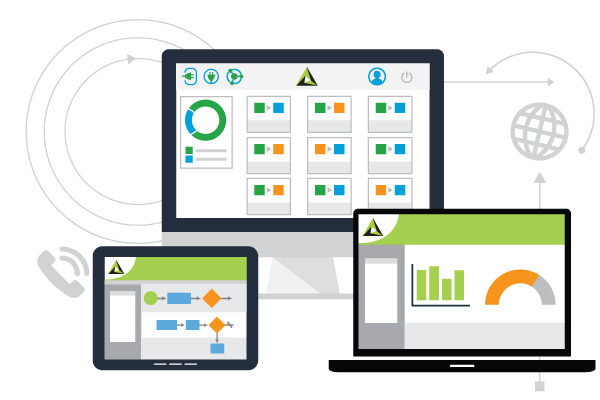Different technologies have different capabilities and enterprises get the advantage of efficiency, speed, and streamlined operations if they work in tandem with each other. Enterprises get access to many benefits at fingertips with the right Hybrid Integration Architecture at their side. New standards to define integrations can avoid many more tradeoffs and complexities that naturally appear when differentiated and maturing technologies come together. Here are some leading business benefits that come along with hybrid IT integration:
 Connecting the Dots: The conventional integration approaches are shortsighted and no longer support long-term integration needs. Problems continue to expand when current and old technologies pile up only to become unmanageable. The scripted approach doesn’t allow enterprises to do business efficiently as it supports little collaboration and scalability. Organizations need to rethink existing integration strategies in place if they want their technologies to do business for them.
Connecting the Dots: The conventional integration approaches are shortsighted and no longer support long-term integration needs. Problems continue to expand when current and old technologies pile up only to become unmanageable. The scripted approach doesn’t allow enterprises to do business efficiently as it supports little collaboration and scalability. Organizations need to rethink existing integration strategies in place if they want their technologies to do business for them.
Automated B2B data exchange ensures that organizations stand to benefit more by allowing differentiated technologies to work together. Seamless integration of workflows delivers flexibility to scale them efficiently from one section to another and work with varied technologies in an integrated manner. Technologies converge with zero runtime errors and perform complementary functions to create an intelligent IT ecosystem that can transform operations inside out.
Eliminating Silos: Artificial Intelligence (AI), Augmented and Virtual Reality (AR/VR), Internet of Things, Advanced Sensors (for monitoring machinery) and many more assistive technologies, how do you bring them into only one silo or one common trigger? It is technically impossible to do this with custom coding where a specific use case is defined to fulfill the integration needs. After integrating one process and making changes to other we find that something important has been moved. We fail to make them work together cohesively without disruption as they work in a fragmented manner. This is a valid reason that companies fail to materialize the value chain despite a massive squandering of investment.
B2B integration allows technologies focusing on specific areas of operations to work as a unit and achieve real value out of new age. Technologies function like a unit and converge efficiently for enabling teams to prevent downtimes and errors.
Driving Down Operational Cost: A lot of cost overheads are associated with a scripted approach, and multiple instances of technologies need constant intervention from IT for building workflows for integration. And every time there is a shakeup or change in the business, more and more resources and developers are needed to develop integrations. That’s why, organizations looking to adopt digital technologies and transform their processes should have a roadmap in place for cost-effectively aligning them with the line of business needs.

An enterprise-class ground to cloud integration solution establishes a best path by enabling normal business users to set up connections thereby reducing the need of IT experts to build integrations. Enterprises can accomplish cross-firm optimization at a lower cost with minimum number of IT experts involved. Also, granular data access improves reconciliations and accuracy of data exchange and time to revenue.
Allowing IT to Focus on Governance: Organization’s today understand that latent information is as risky as lack of information. However, due to lack of clarity they continue using archaic approaches to independently develop connections and end up setting multiple source of truth. The IT remains busy in overhauling the information architecture and pay less attention on IT governance.
The need of the time is keeping IT out of the business data exchange strategy and allowing IT to focus on governance. A cloud to ground integration model addresses this need by allowing normal business users to liberate data from vendor systems and aligning it with the business needs. With hybrid cloud integration architecture businesses can exchange data as per distinct requirements needs as per industry wide standards. Here are some cloud to ground capabilities it delivers:
● Handle complex, any-to-any integration scenarios with simple, graphical approach
● Replace knotty application networks with a central enterprise class integration platform
● Save man-hours, improve operational efficiency, and replace manual effort with automation
With advanced capabilities, hybrid IT integration transforms the way businesses onboard customer and exchange data. The solution helps enterprises in increasing profit margins by 20%, reducing operational costs by 80%, and making organizations easier to do business with.



